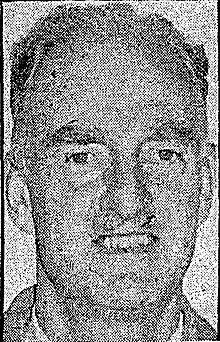Ernest Hillas Williams
Sir Ernest Hillas Williams JP (16 August 1899–5 February 1965)[1] was an Irish judge who served as a British Empire colonial official based for most of his career in British Hong Kong and later also the second Chief Justice of the Combined Judiciary of Sarawak, North Borneo and Brunei.
Ernest Hillas Williams | |
|---|---|
 | |
| 2nd Chief Justice of the Combined Judiciary of Sarawak, North Borneo and Brunei | |
| In office 1957–1957 | |
| Nominated by | Anthony Eden |
| Appointed by | Elizabeth II |
| Preceded by | Sir Ivor Llewellyn Brace |
| Succeeded by | Sir John Ainley MC |
| Secretary for Chinese Affairs Acting | |
| Covering duties 22 September 1937 – 20 October 1937 | |
| Monarch | George VI |
| Governor | Vacant |
| Colonial Secretary | Sir Thomas Southorn |
| Covering duties 5 September 1935 – 3 October 1935 | |
| Monarch | George V |
| Governor | Vacant |
| Colonial Secretary | Sir Thomas Southorn |
| Personal details | |
| Born | 16 August 1899 Cork, County Cork, Munster, United Kingdom of Great Britain and Ireland (now Republic of Ireland) |
| Died | 5 February 1965 (aged 65) Málaga, Province of Málaga, Spain |
| Resting place | English Cemetery, Málaga, Province of Málaga, Andalusia, Spain |
| Citizenship | Irish |
| Nationality | |
| Spouse(s) | Mary Howard Williams |
| Residence | Caterham, Tandridge District, Surrey, England, United Kingdom |
| Military service | |
| Allegiance | |
| Branch/service | |
| Rank | Sergeant |
| Unit | Hong Kong Volunteer Defence Corps |
| Battles/wars | World War II |
Career
Williams received a BA in mathematics from Trinity College Dublin in 1922. While serving in the Colonial Service, Williams was promoted from colonial administrator to puisne judge and later also served as the assistant Attorney General of Hong Kong.[2] Over the course of his time in British Hong Kong, Williams was twice appointed acting Secretary for Chinese Affairs of the Executive Council of Hong Kong.[3] Following the events of World War II, Williams was sent to British Borneo and succeeded Sir Ivor Llewellyn Brace as Chief Justice of the Combined Judiciary of Sarawak, North Borneo and Brunei.[2][1]
Williams was also a sergeant in the Hong Kong Volunteer Defence Corps.[4]
Prisoner of war
Williams was a prisoner of war (POW) held at a camp in Sham Shui Po Barracks before later being moved to Innoshima, Hiroshima Prefecture by the Imperial Japanese Army.[2][5][6][7]
Honours


Death
Williams died in early February 1965 whilst in the town of Málaga, Spain.[1]
References
- "Ernest Hillas Williams". findagrave.com. 23 March 2019. Retrieved 20 August 2019.
- "Ernest Hillas WILLIAMS [1899-1965]". gwulo.com. Retrieved 20 August 2019.
- "Members Database". Legislative Council of Hong Kong. Retrieved 20 August 2019.
- "Hong Kong Volunteer Defence Corps". hongkongwardiary.com. Retrieved 20 August 2019.
- "British POWs Innoshima POW Camp". mansell.com. Retrieved 20 August 2019.
- "Roll of Honour". roll-of-honour.org.uk. Retrieved 20 August 2019.
- "Book 3: The POWs". hongkongwardiary.com. Retrieved 20 August 2019.
- "CENTRAL CHANCERY OF THE ORDERS OF KNIGHTHOOD" (PDF). The London Gazette. 28 December 1956. Retrieved 20 August 2019.
| Legal offices | ||
|---|---|---|
| Preceded by Sir Ivor Llewellyn Brace |
Chief Justice of the Combined Judiciary of Sarawak, North Borneo and Brunei 1957 |
Succeeded by Sir John Ainley |